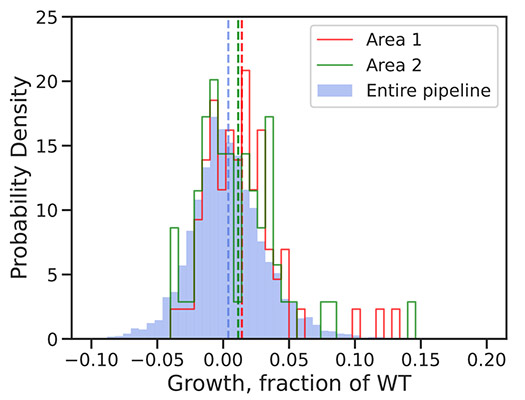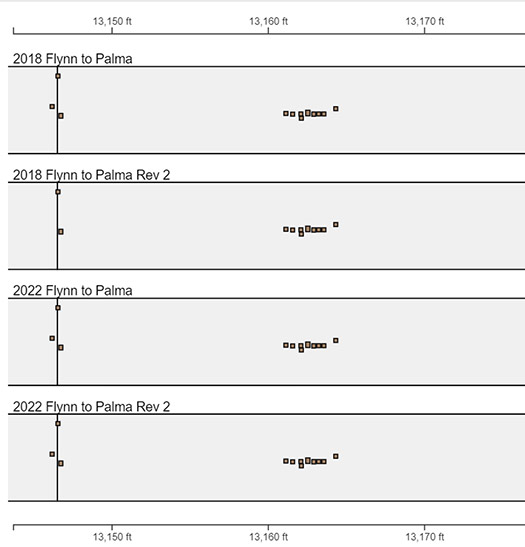November 2023, Vol. 250, No. 11
Features
Internal Corrosion’s Threat to Pipeline Integrity
By Megan Scudder, Michael Murray and Yevgeniy Petrov, OneBridge Solutions
(P&GJ) — Pipeline integrity is critical for ensuring the safe transportation of oil and gas products. Internal corrosion is an element of pipeline integrity that poses a significant concern for operators. According to PHMSA (Pipeline and Hazardous Materials Safety Administration), “internal corrosion historically accounts for approximately 60% of all pipeline incidents caused by corrosion in transmission and gathering pipelines.”
For example, during the five-year period of 2013-2017, approximately 12% of incidents on gas transmission, gas gathering, and hazardous liquid pipelines were caused by internal corrosion. In 2021, internal corrosion accounted for 13.9% of the failures, resulting in $17 million in damages and 4,500 barrels spilled.1 Determining whether internal corrosion is active or passive is crucial in preventing pipeline failures and associated events. However, determining active versus passive corrosion can be challenging for integrity engineers, especially on legacy pipelines with a history of internal corrosion.
In-line inspection (ILI) tools are typically used to detect internal metal loss anomalies, but each tool vendor has different pitting algorithms, and these tools can under call internal anomalies, creating issues when comparing historical run-to-run data.
This article presents an approach to assist operators in determining active internal corrosion, through a model that looks at a modified Desjardins (2010) approach. This model reduces tool bias and provides operators with valuable insights to evaluate program mitigation changes, select validation digs and choose sites for continuous monitoring — ultimately improving pipeline integrity and reducing the risk of a potential release.
Approach
Modern computational tools allow for automated, simultaneous alignment of multiple inline inspections (ILIs), throughout the history of a pipeline’s operation2. The same physical pipe is unambiguously represented by the aligned weld/joint patterns across its entire history, while all modifications of the physical pipe can be tracked by the change in its patterns. Odometer values of the aligned ILIs are interpolated to a common normalized odometer space, based on a single suitable ILI that is used as a reference for aligned history.
As a complement to the pit-to-pit corrosion growth rates (CGRs) derived from matching ILIs, an algorithm is also introduced, to characterize the prevalence and severity of active internal corrosion, based on a statistical technique described in 2010 by Desjardins3. Using the localized population of CGRs in bins across the pipeline, this algorithm constructs a growth metric (or growth score) as the product of the normalized population mean, standard deviation and skewness.
The algorithm further characterizes active internal corrosion in pipelines, based on a statistical technique that considers the prevalence and severity of corrosion growth. The algorithm uses a growth metric to identify active corrosion areas, which are further ranked by their normalized growth score, and a threshold of one standard deviation is applied to select the most severe cases.
The severity and density of active corrosion are both used to compile a ranking list of pipelines requiring the most attention from operators. The analysis is performed on both matched and unmatched anomalies, and multiple ILIs are compared to minimize the chances of missing important corrosion information.
The model identifies areas of active corrosion in pipelines by analyzing ILI data and provides normalized odometer ranges for each area. Overlapping ranges are combined into singular, continuous areas, with the maximum growth metric reported. The model also includes additional datasets, such as internal corrosion field data and field repairs, to validate the active areas. Anomaly counts in ILIs inside the active area are examined to validate the corrosion activity, and a negative count difference between ILIs can indicate active growth in the region.
Business Value
ILI Validation in Active Areas
The ILI verification process offers several benefits for accuracy in pipeline maintenance. One such benefit is the ability to select validation digs and choose sites to conduct ILI tool measurement validations. This process allows for the mitigation of one of the most active regions on the pipeline, because the model determines regions based on anomaly size — guaranteeing that the location will have at least 50 anomalies and providing the operator with several data points.
By using ILI verification, pipeline operators can improve their ability to detect and respond to pipeline corrosion threats with greater accuracy and confidence.
Continuous Monitoring
Continuously monitoring internal corrosion on a pipeline is a challenging task. However, the industry has come up with a solution in the form of an ultrasonic testing (UT) mapping device that can provide useful information about internal corrosion. The effectiveness of this device is highly dependent on its location, as it needs to be placed in areas where internal corrosion is active to provide accurate readings.
The model developed in this study can help operators in identifying the most active regions on the pipeline, which can then be used to determine the locations for continuous monitoring. This approach ensures that the device is placed in areas that are most susceptible to corrosion, allowing for more accurate and effective monitoring.
Reduce Chemical Spend
Operators can reduce their chemical spending by leveraging ILI results to make more informed decisions. Currently, operators are making decisions about chemical treatments based on monitoring data alone, without considering the results of ILI assessments. By including ILI analysis results, both chemical providers and operators can gain a better understanding of the pipeline's condition.
For example, if ILI results indicate that there is passive internal corrosion, the need for chemical treatment reduces. This information allows operators to scale back their chemical programs to maintenance-based ones, rather than reactive ones, reducing chemical usage and associated costs. By taking advantage of ILI results, operators can make more strategic decisions that can have a positive impact on the bottom line, while maintaining pipeline integrity.
Internal corrosion is a major concern for pipeline integrity, accounting for a significant percentage of all pipeline incidents caused by corrosion. The two models discussed in this article can help operators to better evaluate program mitigation changes, while highlighting areas of active corrosion with minimal influence from tool bias.
These models deliver several business values — including reducing costs and improving monitoring — while providing a better understanding of the internal corrosion threat. By using these models, operators can ensure that their pipelines are being maintained effectively and reduce the risk of pipeline failures.











Comments